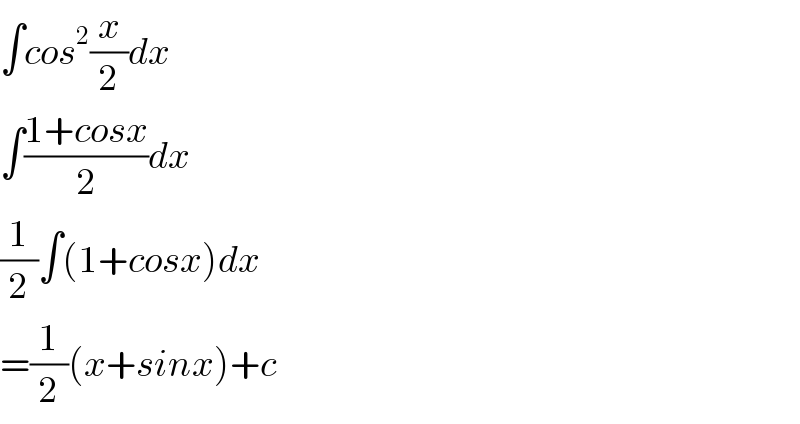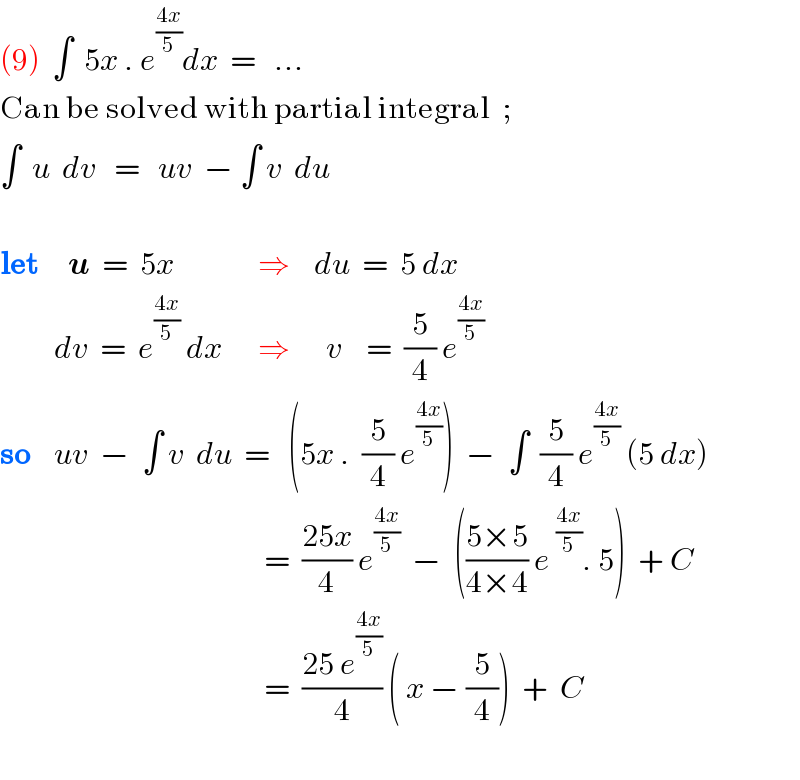
Question and Answers Forum
Question Number 50158 by cesar.marval.larez@gmail.com last updated on 14/Dec/18

Commented by cesar.marval.larez@gmail.com last updated on 14/Dec/18

Answered by afachri last updated on 14/Dec/18

Answered by tanmay.chaudhury50@gmail.com last updated on 14/Dec/18

Answered by tanmay.chaudhury50@gmail.com last updated on 14/Dec/18

Answered by tanmay.chaudhury50@gmail.com last updated on 14/Dec/18

Commented by cesar.marval.larez@gmail.com last updated on 14/Dec/18

Commented by afachri last updated on 14/Dec/18

Answered by tanmay.chaudhury50@gmail.com last updated on 14/Dec/18

Commented by cesar.marval.larez@gmail.com last updated on 14/Dec/18

Answered by afachri last updated on 15/Dec/18

Answered by tanmay.chaudhury50@gmail.com last updated on 14/Dec/18
![7)∫2x^3 e^(−(x/3)) dx 2x^3 ∫e^(−(x/3)) dx−∫[(d/dx)(2x^3 )∫e^(−(x/3)) dx]dx =2x^3 ×(e^((−x)/3) /((−1)/3))−∫6x^2 ×(e^(−(x/3)) /((−1)/3))dx =−6x^3 e^((−x)/3) +18I_2 I_2 =∫x^2 e^((−x)/3) dx =x^2 ×(e^((−x)/3) /((−1)/3))−∫[(dx^2 /dx)∫e^((−x)/3) dx]dx =−3x^2 e^((−x)/3) −∫2x×(e^((−x)/3) /((−1)/3))dx =−3x^2 e^((−x)/3) +6∫xe^((−x)/3) dx =−3x^2 e^((−x)/3) +6I_3 I_3 =∫xe^((−x)/3) dx =x×(e^(−(x/3)) /((−1)/3))−∫[(dx/dx)∫e^((−x)/3) dx]dx =((−3xe^((−x)/3) )/1)−∫(e^((−x)/3) /((−1)/3))dx =((−3xe^((−x)/3) )/1)+3×(e^((−x)/3) /((−1)/3))+C =−3xe^((−x)/3) −9e^(−(x/3)) +C pls do rest by putting I_2 and I_3](Q50183.png)
